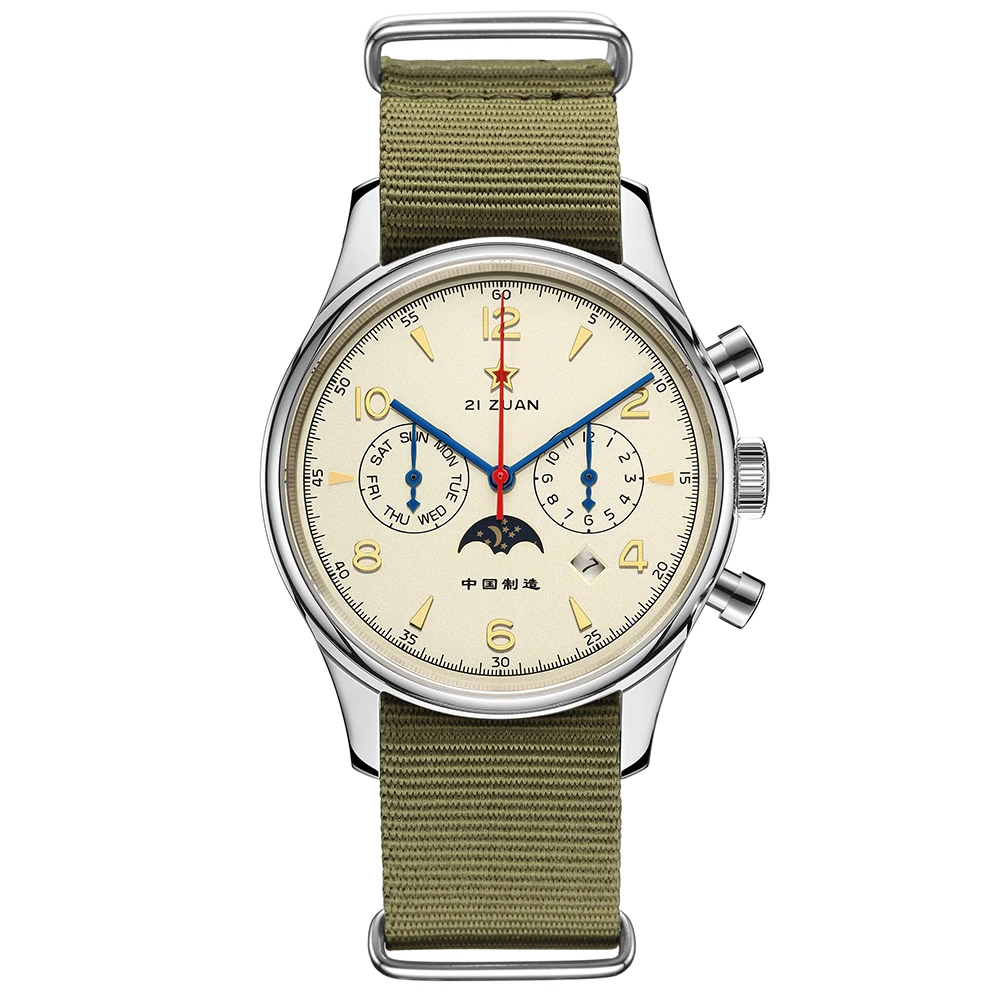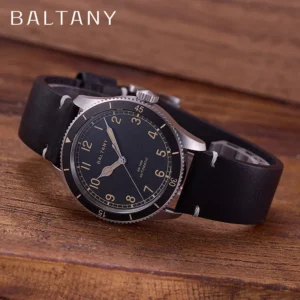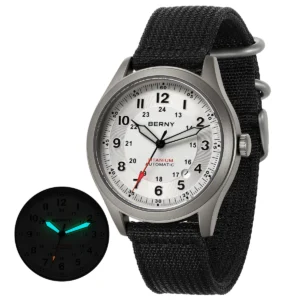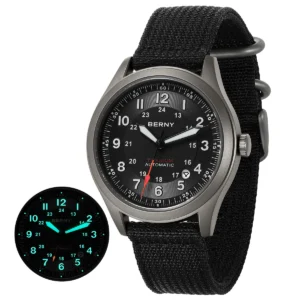When Every Second in the Sky Matters
In the vast expanse of the open sky, timing isn’t just important—it’s everything. For early aviators, a precise timepiece was often the difference between a successful flight and disaster, transforming watches from simple accessories into critical flight instruments. These pioneers faced unique challenges: freezing temperatures at high altitudes, violent cockpit vibrations, and the life-or-death importance of accurate navigation calculations.
As aviation evolved from wood and canvas biplanes to supersonic jets, pilot watches developed alongside, each feature addressing specific needs born from real flight conditions. The oversized crowns, highly legible dials, and specialized functions we associate with pilot watches today weren’t designed on a whim but emerged as direct solutions to aviation challenges.
These distinctive features tell a fascinating story of innovation driven by necessity. The rich pilot watches and aviation history reveals how timepieces evolved from basic timekeepers to sophisticated tools that pilots relied upon for everything from fuel calculations to cross-continental navigation.
This enduring relationship between aviation and horology has created a legacy that continues to influence watch design today, even as digital instruments have largely replaced mechanical tools in modern cockpits.
From Pocket to Wrist: The Birth of Aviation Timepieces
The journey from pocket watches to specialized pilot wristwatches began with a simple problem: early pilots needed both hands free to operate their aircraft. This practical challenge sparked a horological revolution that would forever change how timepieces were worn and designed.
In 1904, Brazilian aviation pioneer Alberto Santos-Dumont complained to his friend Louis Cartier about the difficulty of checking his pocket watch while flying. Cartier’s solution—a watch that could be strapped to the wrist—was revolutionary for its time when pocket watches were still the standard for gentlemen. This early aviator’s request resulted in the Santos wristwatch, widely considered the first purpose-built pilot’s timepiece.
The practical advantages became evident when aviator Louis Blériot wore a Zenith wristwatch during his historic 1909 English Channel crossing. Unlike standard civilian wristwatches, these early aviation timepieces emphasized reliability and readability—the watch had to continue functioning despite vibration, temperature changes, and be easily readable with a quick glance.
These pioneering designs established the foundation for what would become specialized aviation instruments. Unlike decorative civilian watches, pilot timepieces were tools first, featuring larger cases, more legible dials, and sturdier construction to withstand the rigors of flight. The birth of aviation timepieces marked a pivotal moment when function began to drive form, establishing a design philosophy that continues in pilot watches to this day.
Decoding Pilot Watch Design: Features Born from Flight Necessities
High-Visibility Dials: Reading Time in Chaotic Cockpits
Early aircraft cockpits presented a challenging environment for reading a watch: vibration, limited lighting, and the need for split-second decisions all demanded timepieces that could be read instantly without error. This fundamental aviation challenge led to one of the most distinctive elements of pilot watch design: the high-visibility dial.
Standard watch faces of the era featured delicate decorative elements and smaller numerals that were simply inadequate in flight conditions. In response, pilot watches developed high-contrast dials—typically black with white markings or vice versa—creating maximum legibility even in poor lighting conditions.
The evolution of Arabic numerals on these watches tells its own story of aviation necessity. These numerals grew progressively larger and bolder, abandoning elegance for clarity. The distinctive triangular marker at 12 o’clock—now an iconic element of many pilot watches—was specifically designed to provide instant orientation in chaotic conditions, allowing pilots to immediately determine the watch’s position without confusion.
German Flieger watches further refined these concepts with their Type A (simple hour markers) and Type B (prominent minute markers) designs, each responding to specific navigational needs of military pilots. These functional from cockpit to icon design elements have become so successful and recognizable that they now define the aesthetic of pilot watches, demonstrating how thoroughly aviation challenges shaped horological design.
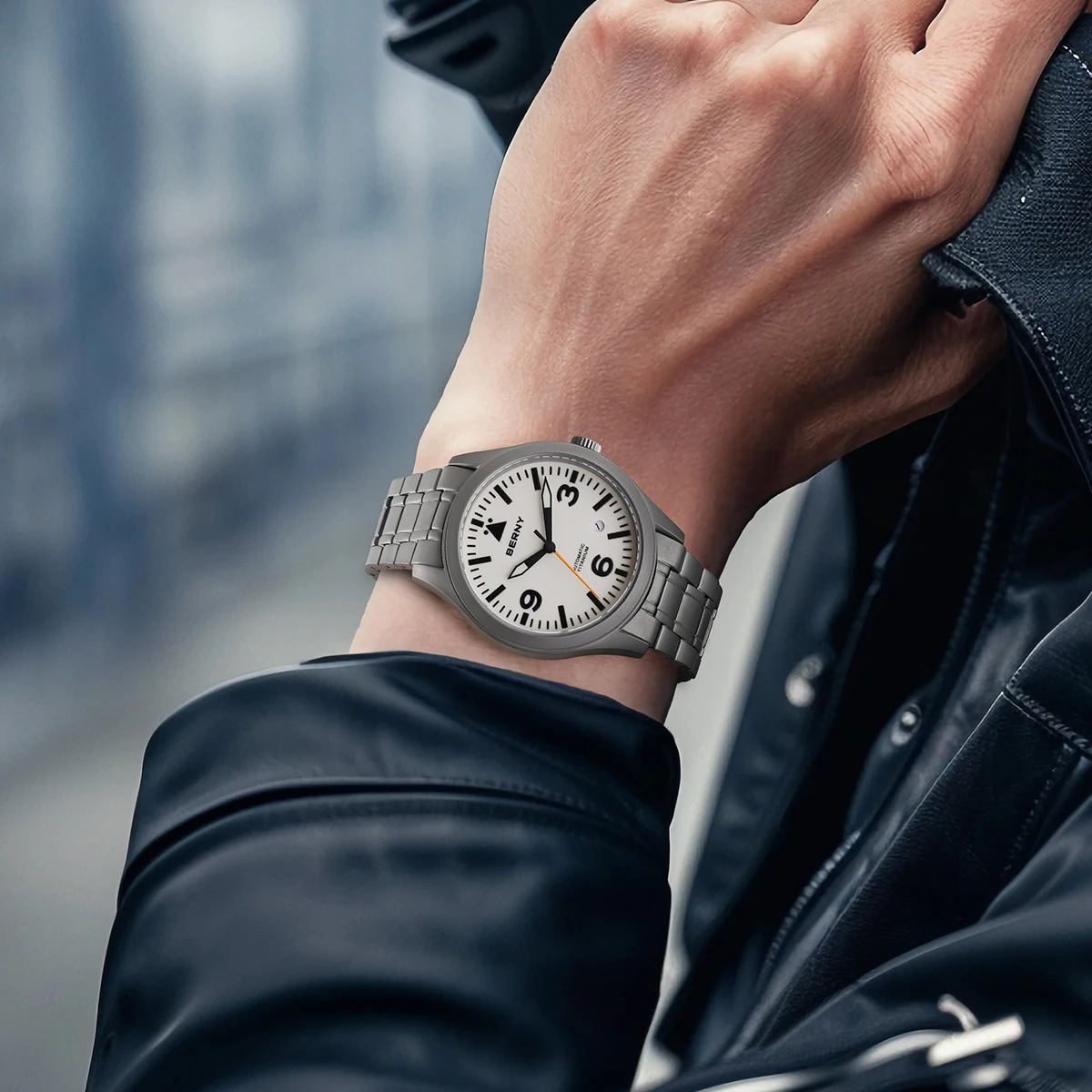
Oversized Crowns: Adjusting Watches with Gloved Hands
The distinctive “onion” crowns that protrude prominently from pilot watches weren’t designed as decorative elements but as practical solutions to a specific aviation challenge. Early pilots flying in open cockpits experienced brutally cold temperatures, often well below freezing at higher altitudes. Heavy leather gloves were essential for survival, but they made manipulating standard watch crowns nearly impossible.
The solution was straightforward but effective: dramatically enlarged crowns with deeply grooved or fluted edges provided enough surface area and grip to be manipulated even with thick gloved fingers. These oversized crowns—whether in the classic “onion” shape or the alternative “diamond” pattern—enabled pilots to wind their watches and adjust time without removing their protective gear, a potentially dangerous action at high altitudes where frostbite could set in within minutes.
What began as purely functional evolved into one of the most recognizable aesthetic elements of automatic pilot watches. The oversized crown represents a perfect example of how aviation necessities directly shaped watch design, creating elements so distinctive they now define the very look of the pilot watch category.
Chronograph Functions: Precision Timing for Flight Operations
For pilots, the ability to measure elapsed time with precision wasn’t just convenient—it was essential for navigation, fuel management, and mission timing. Simple hour and minute hands couldn’t meet these complex timing requirements, leading to the integration of chronograph functions as standard features in professional pilot watches.
Chronographs allowed pilots to time flight legs with precision, calculate fuel consumption rates, and coordinate complex operations where timing was critical. These specialized timing mechanisms evolved from simple elapsed-time measurement to sophisticated functions capable of supporting increasingly complex aviation operations.
Military applications further drove innovation, with the development of flyback chronographs that could be instantly reset without stopping—particularly valuable for bomber pilots who needed to time sequential runs with minimal distraction. Additional scales integrated around the dial perimeter, like tachymeters for speed calculations and telemeters for distance estimation, transformed these watches into comprehensive calculation tools.
The combination of these timing functions with aviation-specific scales created powerful mechanical computers on the wrist, exemplified by models like the Breitling Navitimer. These chronograph pilot watches represent the pinnacle of mechanical aviation timekeeping, where split-second precision could make the difference between successful navigation and becoming dangerously off course.
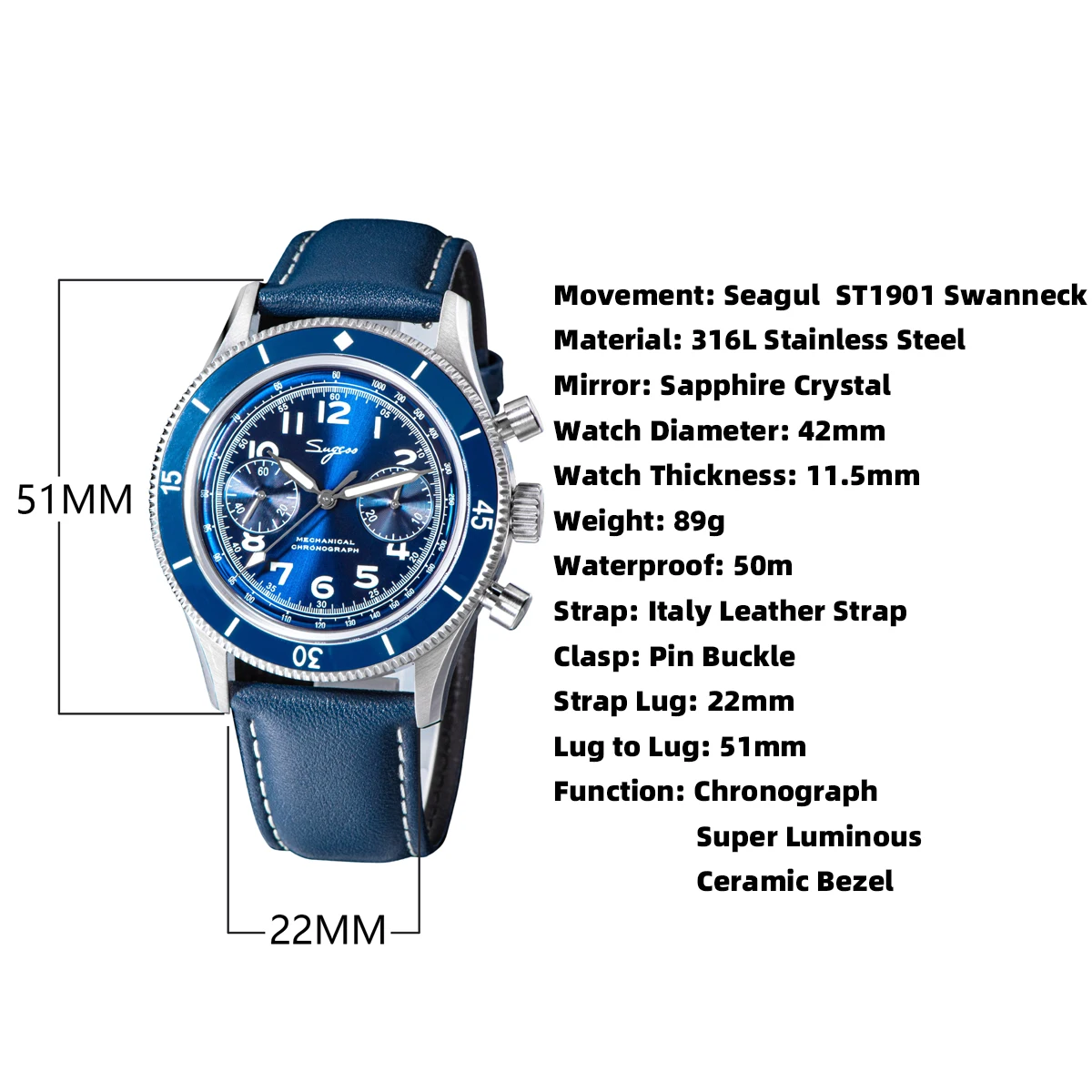
Dual Time and GMT Functions: Tracking Time Across Flight Paths
As aviation progressed from short hops to transcontinental flights, pilots faced a new challenge: crossing multiple time zones while needing to track both local time at their current position and standard reference time for navigation and communication. This challenge gave birth to dual time and GMT complications that remain hallmarks of pilot watches today.
The adoption of Greenwich Mean Time (GMT, also called “Zulu time” in aviation) as a universal aviation standard created the need for watches that could display this reference time alongside local time. The innovation of a dedicated 24-hour hand, distinct from the standard 12-hour display, allowed pilots to track two time zones simultaneously while maintaining clear day/night differentiation—crucial for flight planning and communication.
Various technical approaches emerged to address this need: additional hands, rotating bezels with 24-hour markers, and innovative dial designs all offered solutions for monitoring multiple time zones at a glance. The expansion of commercial aviation in the mid-20th century accelerated the development and refinement of these features as pilots routinely flew across continents and oceans.
Understanding these timezone complications in pilot watches reveals how directly aviation operations influenced watch development. What began as a solution to the practical challenge of international flight timing has become one of the most useful and enduring complications in horology, appreciated by travelers and watch enthusiasts alike.
Anti-Magnetic Protection: Shielding Against Cockpit Interference
One of the most important yet visually undetectable features of pilot watches addresses a serious threat to accurate timekeeping: magnetic fields. Aircraft instrument panels generate magnetic fields that can severely disrupt the precision of mechanical watch movements, causing them to run fast, slow, or stop entirely—a potentially dangerous situation when timing is crucial for navigation.
The solution came in the form of specialized inner cases made of soft iron that act as Faraday cages, directing magnetic fields around the movement rather than through it. This innovation was critical for maintaining chronometric precision in the increasingly instrument-dense cockpits of advancing aircraft technology.
Anti-magnetic protection was particularly vital before electronic navigation systems became standard, when dead reckoning and celestial navigation relied on precise timing for accurate position calculations. A watch gaining or losing minutes due to magnetic interference could translate to navigational errors of dozens or even hundreds of miles—potentially catastrophic when flying over oceans or uninhabited terrain.
These protective features became standardized in professional GMT pilot watches and remain important today, with modern standards often requiring resistance to magnetic fields many times stronger than those encountered in early aviation. While not as visually apparent as oversized numerals or prominent crowns, anti-magnetic protection represents one of the most critical functional innovations driven by aviation needs.
Slide Rule Bezels: Wrist-Mounted Flight Computers
Perhaps no feature better illustrates the evolution of pilot watches from simple timekeepers to sophisticated flight instruments than the slide rule bezel. Before electronic calculators and digital flight computers, pilots needed to perform complex calculations in flight—fuel consumption, airspeed conversions, distance-time problems—all with mechanical tools.
The ingenious solution was to adapt the logarithmic slide rule—a calculation device dating back to the 17th century—into a circular format that could be integrated into a watch bezel. This transformed the pilot’s timepiece into a true wrist-mounted computer capable of multiplication, division, and various specialized aviation calculations through the relative positioning of scales.
With proper training, pilots could use these bezels to:
– Calculate fuel consumption rates
– Convert between different units of measurement
– Determine ground speed from airspeed
– Estimate remaining flight time
– Calculate rates of climb and descent
These functions proved particularly valuable during the rapid expansion of commercial aviation in the mid-20th century when flight planning became increasingly complex. The slide rule bezel represents the pinnacle of mechanical pilot watch functionality, demonstrating how far these timepieces had evolved from the simple wristwatches requested by early aviators.
This marriage of timekeeping and calculation capabilities made classic pilot watches indispensable cockpit tools for generations of aviators, creating a legacy of functional design that continues to influence aviation timepieces today.
Battle-Tested: How Wartime Aviation Advanced Pilot Watch Development
World War II served as a catalyst for pilot watch evolution, transforming what had been individually designed timepieces into standardized, mass-produced instruments subject to rigorous military specifications. The pressures of global conflict demanded watches that could perform reliably under the most extreme conditions, accelerating both innovation and standardization.
German air forces developed the Beobachtungsuhr (B-Uhr) specification, which codified many features we now associate with classic pilot watches: large 55mm cases for maximum legibility, oversized crowns for operation with gloves, and distinctive dial layouts optimized for navigation. These watches weren’t fashion accessories but precisely specified navigation instruments issued to aircrew rather than worn as personal items.
The British responded with their own specifications, resulting in the “Dirty Dozen” W.W.W. (Watch, Wrist, Waterproof) timepieces produced by twelve different manufacturers to identical standards. American forces similarly standardized with the A-11 specification, creating watches that proved their worth in combat conditions from the freezing high altitudes of bomber formations to the tropical heat of Pacific theater operations.
This wartime experience provided invaluable real-world testing that refined pilot watch design. Features that proved essential remained and evolved, while impractical elements were discarded. The standardization driven by military requirements established a design language for pilot watches that continues to influence timepieces today, demonstrating how the pilot watch design through aviation eras developed in response to the ultimate test—the battlefield.
Long-Distance Navigation: Specialized Timepieces for Transoceanic Flight
As aviation conquered ever-greater distances, crossing oceans and continents became the new frontier, bringing with it unprecedented navigational challenges. Before satellite navigation and sophisticated electronics, pilots relied on celestial navigation techniques that transformed watches from simple timekeepers into critical navigation instruments.
The pinnacle of this specialized development came with the Longines Hour Angle watch, designed in collaboration with aviation pioneer Charles Lindbergh after his historic transatlantic flight. This innovative timepiece allowed pilots to calculate longitude based on the angle of the sun relative to Greenwich Mean Time—a complex calculation simplified through specialized dial markings and rotating bezels.
These navigation watches featured unique dial configurations that converted time into angular measurements, allowing pilots to work with nautical almanacs and sextants to determine their position with remarkable accuracy considering the technological limitations of the era. The technical brilliance of these watches lay in how they transformed standard time displays into specialized tools for position finding—essentially serving as analog GPS predecessors.
The importance of these timepieces cannot be overstated; in an era before electronic navigation aids, an accurate watch was the foundation of all position calculations over featureless ocean expanses where landmarks were nonexistent. The features of multi-timezone pilot watches played a critical role in making long-distance aviation safer and more reliable, establishing routes that would eventually become today’s global air transportation network.
From Jet Age to Digital Era: Evolution of the Pilot’s Timepiece
The advent of jet aircraft in the 1950s and 1960s brought dramatic changes to the aviation environment, with higher speeds, greater altitudes, and eventually pressurized, climate-controlled cockpits. These advancements altered but did not eliminate the need for reliable timepieces, as pilot watches evolved to meet changing requirements while maintaining their core identity.
As cockpit instrumentation advanced from basic analog gauges to sophisticated electronic displays, the role of the pilot’s watch shifted from primary instrument to trusted backup system—still essential but no longer the primary reference for critical calculations. This transition was reflected in design changes that balanced traditional features with modern innovations.
Certain classic features remained remarkably persistent: chronograph functions for timing procedures, GMT capabilities for managing multiple time zones, and robust construction for reliability. However, new materials like scratch-resistant sapphire crystals and corrosion-resistant titanium automatic watches began replacing traditional materials to meet the demands of modern aviation.
Perhaps most notably, as digital instruments proliferated in cockpits, the mechanical reliability of traditional pilot watches took on new importance as backup systems. Unlike electronic instruments vulnerable to power failures or electromagnetic interference, a well-maintained mechanical watch would continue functioning regardless of aircraft electrical systems—a redundancy principle that remains valuable in modern aviation.
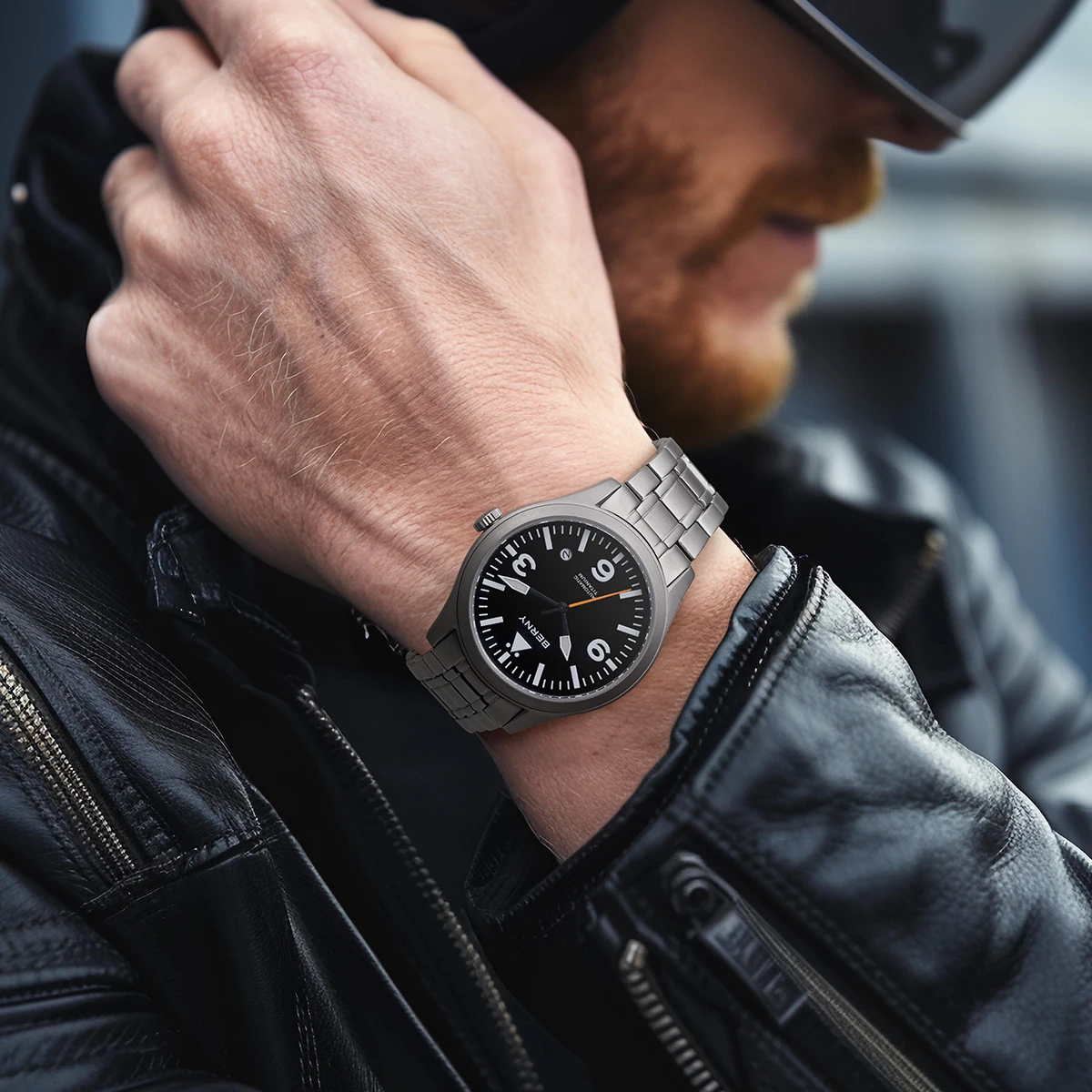
Heritage in Modern Design: Why Pilot Watch Features Endure
Today’s pilot watches represent a fascinating blend of historical functionality and modern aesthetics. What began as solutions to specific aviation challenges have evolved into distinctive design elements that define an entire category of timepieces, appreciated by aviation professionals and watch enthusiasts alike.
The oversized legible dials that once ensured readability in vibrating cockpits now provide a bold, distinctive aesthetic. Prominent crowns originally designed for gloved operation have become signature elements that instantly identify pilot watches. Chronograph functions and slide rule bezels that once performed critical calculations now showcase mechanical ingenuity and connect wearers to aviation heritage.
Modern materials and manufacturing techniques have enhanced these traditional designs, improving durability, accuracy, and comfort while maintaining the unmistakable visual language of aviation timepieces. The best contemporary examples honor their functional roots while embracing innovations that make them more practical for everyday wear.
This enduring appeal speaks to both the fundamental soundness of the original designs and the emotional connection these watches create with aviation history. Each feature tells a story of problem-solving and ingenuity, connecting wearers to the golden age of flight and the history of aviation timekeeping tools that made exploration of the skies possible.
Automatic Chronograph Watches, Chronograph Pilot Watches
Price range: $233.36 through $237.58 Select options This product has multiple variants. The options may be chosen on the product pageClassic Automatic Dress Watches, GMT Automatic Watches, GMT Pilot Watches
Price range: $1,240.86 through $1,463.33 Select options This product has multiple variants. The options may be chosen on the product pageProfessional Spec Dive Watches, Titanium Automatic Watches
$574.74 Select options This product has multiple variants. The options may be chosen on the product pageClassic Pilot Watches, Military Inspired Automatic Watches
$561.00 Select options This product has multiple variants. The options may be chosen on the product pageClassic Field Watches, Classic Pilot Watches, Rugged Automatic Watches, Titanium Automatic Watches
Price range: $425.24 through $496.28 Select options This product has multiple variants. The options may be chosen on the product pageClassic Field Watches, Classic Pilot Watches, Military Inspired Automatic Watches, Titanium Automatic Watches
Price range: $425.24 through $496.28 Select options This product has multiple variants. The options may be chosen on the product page
The pilot watch remains one of the finest examples of how addressing practical challenges can create timeless design. While few modern wearers need to calculate fuel consumption or navigate by the stars, the robust functionality and distinctive aesthetics of these aviation-inspired timepieces continue to resonate in a world increasingly dominated by digital devices.
The Lasting Legacy of Function-First Design
The journey from basic timekeepers to sophisticated pilot watches demonstrates a fundamental truth about exceptional design: when form truly follows function, the result is both practical and beautiful. Each distinctive feature we associate with pilot watches today—from high-contrast dials to oversized crowns—emerged as a direct solution to a specific aviation challenge.
What makes pilot watches special is how thoroughly their design was shaped by real-world needs rather than aesthetic whims. The high-contrast dials weren’t created for visual impact but for instant readability in challenging conditions. Chronograph functions weren’t added for complexity but to enable critical in-flight calculations. The distinctive crowns weren’t oversized for style but for operation with gloved hands in freezing cockpits.
This function-first approach created a design language so effective and distinctive that it has transcended its practical origins to become an enduring horological category. Even as digital instruments have largely replaced mechanical tools in aviation, the pilot watch aesthetic continues to appeal because it represents the perfect marriage of purpose and execution.
The true legacy of these aviation-inspired timepieces lies in their demonstration that solving practical problems with integrity and ingenuity creates objects of lasting value. In an era of disposable technology, pilot watches remind us that thoughtful design responding to genuine needs creates not just tools but treasures that connect us to the daring spirit of aviation pioneers who took to the skies with nothing but courage and a reliable timepiece on their wrist.

